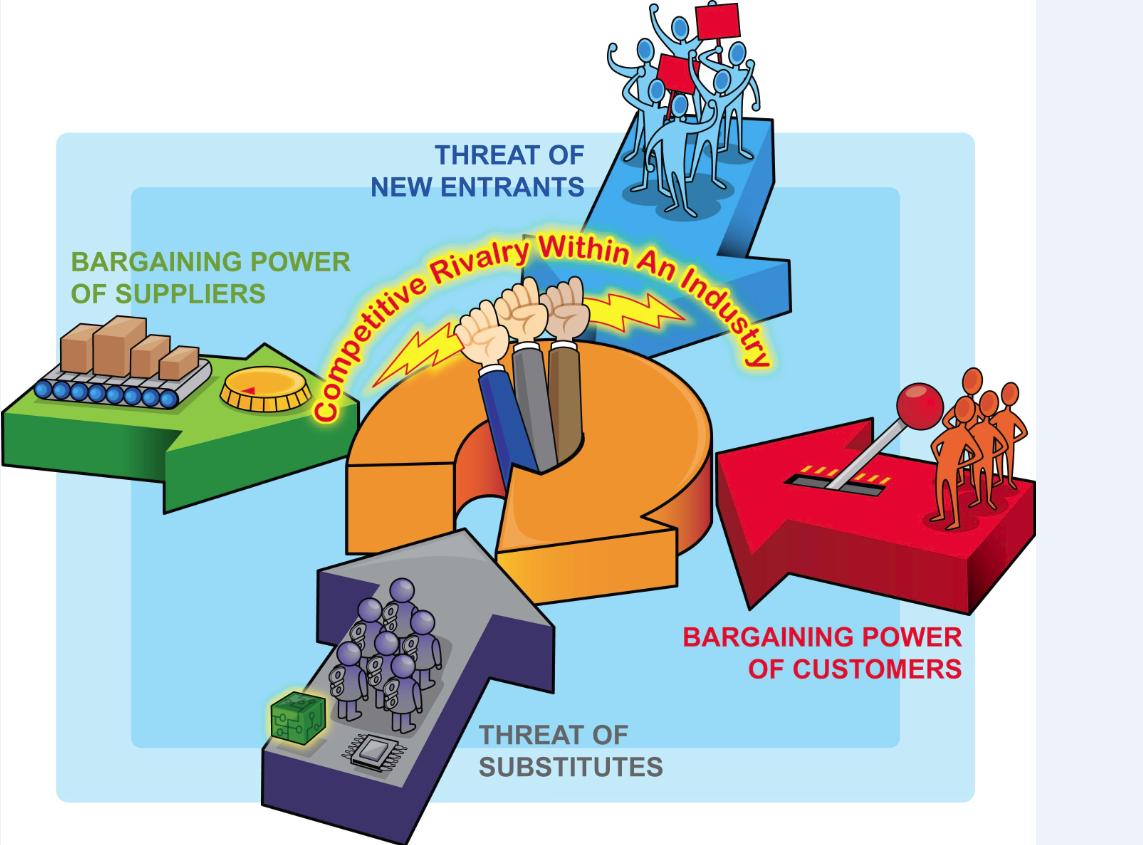WHY COMPETITIVE ADVANTAGES ARE TYPICALLY TEMPORARY?
- To survive and thrive an organization must create a competitive advantages.
A product or service that an organization's customers place a greater value on than similar offerings from a competitor.
First-mover advantage
Occurs when an organization can significantly impact its market share by being first to market with a competitive advantage.
- Organizations watch their competition through environmental scanning
The acquisition and analysis of events and trends in the environment external to an organization
- Three common tools used in industry to analyse and develop competitive advantages include :
-Porter's three generic strategies
-Value chains
The Five Forces Model Evaluating Business Segments
- Portal's Five Forces Model determines the relative attractiveness of an industry
Buyer Power
- High when buyers have many choices of whom to buy from and low when their choices are few.
- Way to reduce buyer power is through loyalty programs
2) Switching costs - costs that can make customers reluctant to switch to another product or service.
Supplier Power
- High when buyers have few choices of whom to buy from and low when their choices are many.
- Organizations that are buying goods and services in the supply chain can create a competitive advantages by locating alternative supply sources (decreasing supplier power) through B2B marketplaces
- Two types of business to business (B2B) marketplaces
2) Reverse auction - an auction format in which increasingly lower bids are solicited from organizations willing to supply the desired product or service at an increasingly lower price.
Threat of Substitute Products or Services
- Threat of Substitute Products or Services - high when there are many alternatives to a product or service and low when there are few alternatives from which to choose
Switching costs - costs that can make customers reluctant to switch to another product or service.
Threat of new entrants
- Threat of new entrants - high when it is easy for new competitors to enter a market and low when there are significant entry barriers to entering a market
Rivalry among Existing Competitors
- Rivalry among Existing Competitors - high when competition is fierce in a market and low when competition is more complacent.
- Although competition is always more intense in some industries than in others, the overall trend is toward increased competition in just about every industry.
- Organizations typically follow one of Porter's three generic strategies when entering a new market.
Value Creation
- Once an organization chooses its strategy, it can use tools such as the value chain to determine the success or failure of its chosen strategy
Value chain - views an organization as a series of processes, each of which adds value to the product or service for each customers.
- Customers determine the extent to which each activity adds value to the product or service
- The competitive advantage is to :
- Perform some combination of the two


